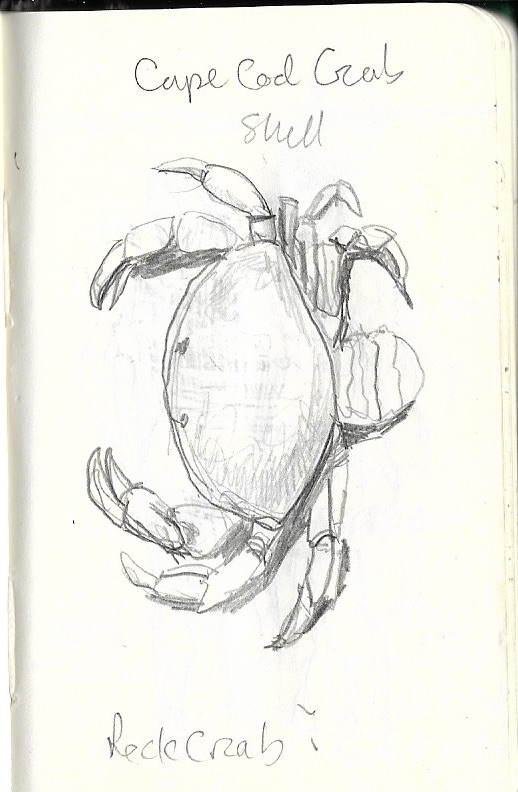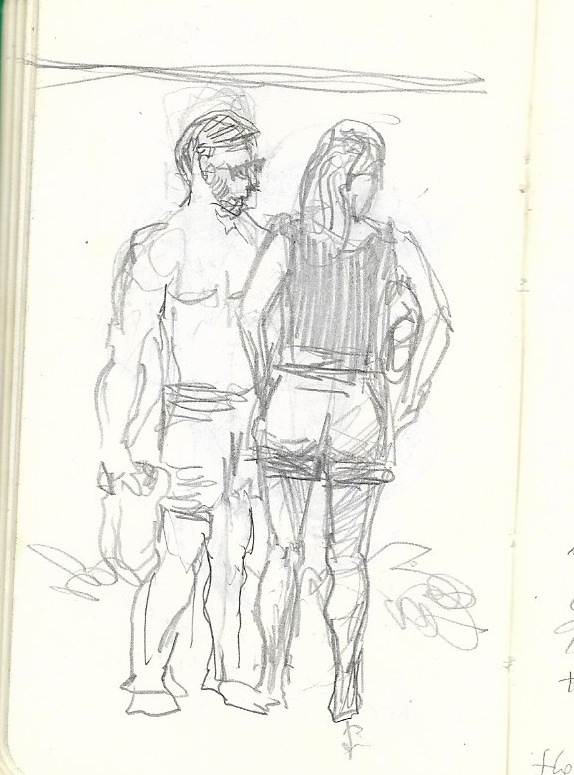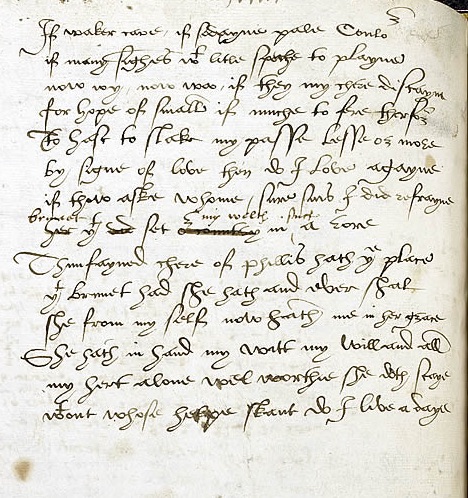Relic and Epithalamium

The empty shell of a rock crab, found on the blazing sand of the Cape Cod National Seashore on a hot day in August. The carapace of an intention: all that’s left is the armor. He (she?) dates back to the Jurassic, and is built of “highly mineralized chiton.” What are you built of? What wave dumped you here? What will you leave, on the lone shore?

This couple was discussing marriage while staring out at the Atlantic. We place all sorts of cultural festoons on the “institution” of marriage, but fundamentally this is a biological act, one we share with most creatures on our thin earth. Both crab and human seek first to stay alive, and then to perpetuate themselves; they reproduce sexually in order to encourage genetic diversity, which generates a robust array of responses to combat the entropic winds that constantly tear at all living things. These humans met through complex courtship rituals which served (hopefully) to establish compatibility; the crab (above) had a similar romantic experience–in crab courtship, the female releases a hormone into the water. What happens next, according to The Uncommon Guide to Common Life on Narragansett Bay, is “The male crab will encircle the female with his claws, protecting her during molting. Mating can only occur during molting, with the male providing protection while the female is soft-shelled and defenseless. Once the female’s shell has hardened, in two or three days, the male releases her.”
When courtship goes awry in human mating attempts, one result can be poetry.

Sir Thomas Wyatt’s poem, “‘If waker care, if sudden pale colour”, written after he had been spurned by Anne Boleyn and had instead become attracted to Elizabeth Darell. (Egerton Ms. 2711, f.66v)
Discover more from James Armstrong
Subscribe to get the latest posts sent to your email.